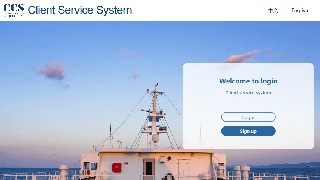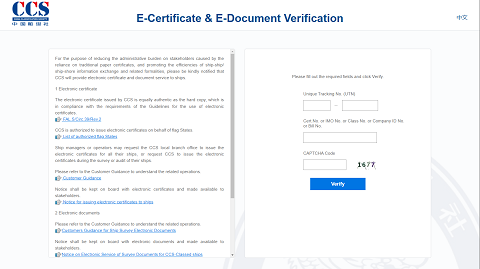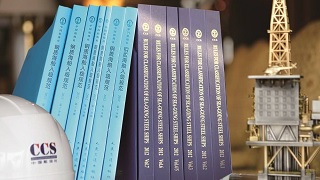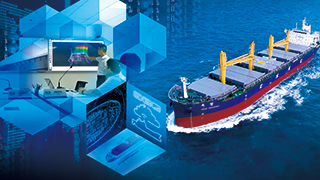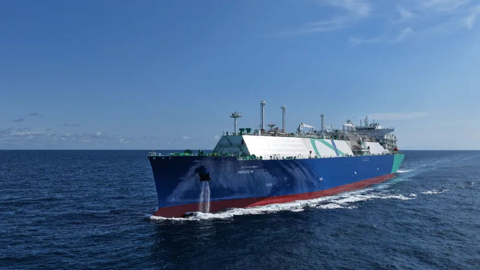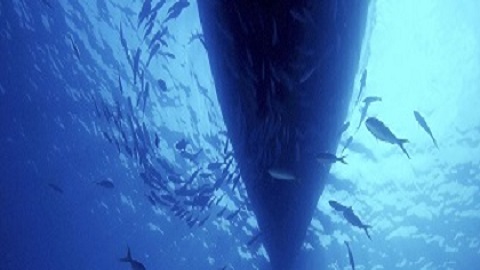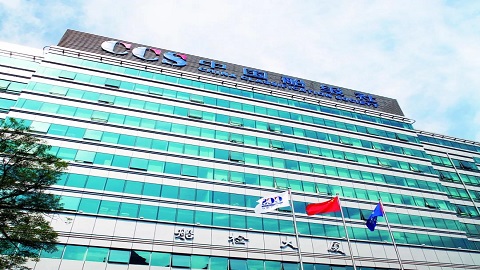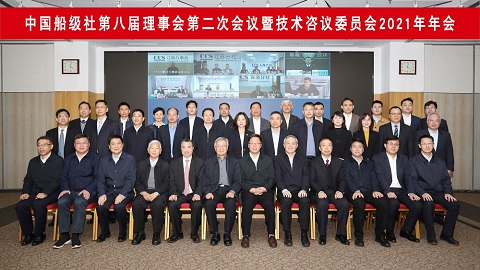Known as a barometer of the technological development trends of international maritime industry, Marintec China 2023 was held offline in Shanghai from 5th to 8thDecember after an interval of 4 years. On 5th December, Marintec China 2023 was grandly opened at Shanghai New International Expo Centre. Mr. Sun Feng, President of China Classification Society (CCS), attended the exhibition with his delegation. During this period, Vice President Mr.Fan Qiang introduced to the guests the application of CCS’ green, intelligent, and digital technologies on ships, as well as its achievements on shipping safety, industry data interconnection, etc.
On the the second day of the exhibition, CCS released the “2023 Low-carbon Development Outlook for Shipping”
Special Forum for Shipping and Port
Mr. Luo Xiaofeng, Deputy Director of the CCS Science and Technology Working Committee, released the “2023 Low-carbon Development Outlook for Shipping” on behalf of CCS.

In the context of addressing climate change globally, there is increasing pressure on greenhouse gas emission in the shipping sector, and green and low-carbon development has become the focus of the industry. Two years ago, CCS released the “2021 Low-carbon Development Outlook for Shipping” at the North Bund Forum to explore the path for the shipping industry to achieve emission reduction targets.
In July 2023, the International Maritime Organization (IMO) passed the “2023 Strategy on Reduction of GHG Emissions from Ships” at the meeting of the Marine Environment Protection Committee (MEPC 80), and proposed the goal that “to peak GHG emissions from international shipping as soon as possible and to reach net-zero GHG emissions by or around, i.e. close to, 2050, taking into account of different national circumstances,” demonstrating the IMO’s ambition to actively address global climate challenges.
In addition, the legislative pace of the European Union on shipping emission reduction has accelerated, relevant rules have been issued successively, and non-governmental organizations and regional organizations have put forward stricter requirements for emission reduction. The above measures will further promote profound changes on the international shipping industry, rapidly promote green and low-carbon development of shipping, and have a profound impact on the upstream and downstream of the industrial chain.

By focusing on the IMO 2023 greenhouse gas emission reduction strategy and the latest emission reduction policies for shipping, CCS “2023 Low-carbon Development Outlook for Shipping” provides analysis of the challenges and opportunities faced by relevant fields as well as evaluation of the applicability and application prospects of major emission reduction plans, explores the low-carbon development path of the industry, and proposes recommendations on optimal emission reduction solutions for typical ships. Through this report, CCS shows its willingness to share its views with the industry and work together to explore the path of safe, green, and sustainable development on shipping.
Special Forum for Cruise Ships
On behalf of CCS, Mr. Wang Zhirong, Deputy Director of CCS Shanghai Rules & Research Institute, released CCS safe-return-to-port system evaluation software (COMPASS-SAP) .and (COMPASS-EVA),a tool for personnel evacuation analysis on passenger ships, aligned with the "Guidelines for Personnel Evacuation Analysis of Passenger Ships"

★CCS Safe-return-to-port System Evaluation Software (COMPASS-SAP)
CCS released the “Guidelines for Implementation of IMO Requirements for Safe Return To Port and Orderly Evacuation” in 2019. In order to address a series of issues such as systematic implementation of safe-return-to-port, lack of implementation tools, cross-unit and cross-profession coordination, huge system workload, etc., the CCS cruise ship team has independently developed a safe-return-to-port system evaluation software with independent intellectual property rights (COMPASS-SAP) after 5 years of dedicated research by focusing on the requirements of the guidelines.
This software adopts a modular design approach to develop server/client management modules, ship model construction modules, system model construction modules, evaluation and calculation modules, evaluation result viewing modules, and report output modules, etc. Based on the latest QT and ZMQ frameworks, the software adopts a server/client architecture to support multi-user collaborative work, read NAPA/CAD files, and output reports in both Chinese and English. It has such functions as automatically traversing accident scenarios, automatically calculating and evaluating important systems for safe-return-to-port, and automatically generating evaluation reports. In addition, it can also output data related to crew manual operations required for emergency response to safe-return-to-port of ships.
The software has passed professional third-party testing, with output evaluation report fully meeting the requirements of IMO Circular MSC.1/Circ.1369. This software can ensure independent and controllable technology and data security, with all technical indicators reaching the international leading level, strongly supporting the design, construction, and survey of the first Chinese large-scale cruise ship, and providing solutions for the problem of safe-return-to-port in the design and construction of cruise ships. Currently, the software has been applied to special-purpose ships including large and medium-sized cruise ships, passenger ships, ro-ro passenger ships, and hospital ships, etc.
★ Guidelines and Software for Personnel Evacuation Analysis of Passenger Ships (COMPASS-EVA)
In response to the industry requirements for the design and construction of large and medium-sized luxury cruise ships in China, the CCS cruise ship team has developed the “Application Guidelines for Evacuation Analysis for Passenger Ships”, which specifies the benchmark scenarios, general requirements, and calculation methods for simplified evacuation analysis and advanced evacuation analysis. The Guidelines have also provided general requirements for personnel evacuation analysis in other specific applications, providing guidance for the design and safety risk assessment of passenger ships.
CCS has also developed a passenger ship personnel evacuation analysis software (COMPASS-EVA) with fully independent intellectual property rights. This software not only supports personnel evacuation analysis in benchmark scenarios, but also supports the analysis of the impact of ship longitudinal/transverse inclination and fire hazards on personnel evacuation in case of water ingress, and it can also carry out personnel evacuation analysis in complex scenarios.
This software can accurately depict the layout of ship compartments, evacuation facilities, and micro movement characteristics of personnel. It has a visual operation and editing interface, supports input and output of engineering files, CAD drawing files, and personnel data files, etc., supports dynamic display of simulation processes, and automatically outputs calculation analysis reports.
The evaluation report output by this software meets the requirements of the IMO Circular MSC.1/Circ.1533. This software can provide technical consulting services for cruise ship design, including evacuation analysis and evaluation, design and layout optimization, as well as personnel evacuation analysis and safety assessment in fire, etc. to jointly safeguard the bottom line of maritime life safety. Currently, the guidelines and software for personnel evacuation analysis have been applied to the design and evaluation of large and medium-sized cruise ships, and ro-ro passenger ship, etc.
Note: If you need to reprint, please indicate the source of the information.

